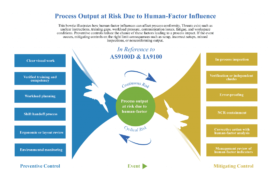In 2022, global sales of heat pumps surged by 11%, marking the second consecutive year of double-digit growth in this critical technology for sustainable heating. This rise in sales is largely attributed to increasing policy support, higher natural gas prices, and a global push to reduce greenhouse gas emissions. These factors have made heat pumps an increasingly attractive option for both residential and commercial heating needs.

European Market Leads the Growth
Europe experienced the most significant growth in heat pump sales, with a nearly 40% increase over the previous year.
The demand was particularly strong for air-to-water heat pumps, which are compatible with standard radiators and underfloor heating systems. In this category alone, sales increased by almost 50%, reflecting the growing preference for more energy-efficient and environmentally friendly heating solutions.
The European market has been bolstered by policies aimed at reducing reliance on natural gas, especially in light of rising energy costs following Russia’s invasion of Ukraine. The European Commission’s plans to double the deployment rate of heat pumps, supported by financial incentives across most EU countries, have further fueled this growth.
Heat Pump Adoption in the United States
In the United States, 2022 marked a significant milestone for heat pump technology as it overtook gas furnaces in sales for the first time. This shift is indicative of a broader trend towards more sustainable heating solutions in a market traditionally dominated by fossil fuel-based systems. The U.S. market for heat pumps has been expanding steadily, particularly in regions where manufacturers have introduced models capable of efficient operation in colder climates. These advancements have helped accelerate the adoption of heat pumps in areas where they were previously underutilized.
Stability in the Chinese Heat Pump Market
China, the world’s largest heat pump market, saw sales remain stable in 2022 despite a general slowdown in the economy. Heat pumps are widely used in China, especially in the northern regions where district heating is common. In Southern China, where winters are milder, air-to-air reversible units are popular for both heating and cooling. Although growth in the Chinese market was not as robust as in other regions, China remains the largest producer and exporter of heat pumps globally, supplying a significant portion of Europe’s demand.
Meeting Global Heating Needs by 2030

Currently, heat pumps meet about 10% of global heating needs in buildings, serving over 100 million households. However, to align with global energy and climate targets by 2030, heat pumps will need to cover nearly 20% of heating needs.
Achieving this goal requires a sustained annual growth rate of over 15% for the rest of the decade. While the adoption of heat pumps has been concentrated in new buildings and single-family homes, expanding their use in multi-story apartment buildings and commercial spaces will be crucial for continued growth.
Role of Financial Incentives
Financial incentives have played a pivotal role in the widespread adoption of heat pumps. As of 2022, more than 30 countries, representing over 70% of global heating demand for buildings, offer subsidies and other financial support to encourage the transition from fossil fuel-based heating systems to heat pumps. These incentives have made heat pumps more accessible, with the cost of the cheapest models now comparable to that of new gas boilers in many major markets. However, challenges such as high upfront costs, supply chain disruptions, and a shortage of trained installers continue to pose barriers to further growth.
Challenges and Future Outlook
Looking ahead, the continued expansion of heat pump deployment will depend on secure and resilient supply chains, particularly for critical components like chips. Manufacturers have already announced significant investments in expanding production capacity, with more expected in response to new incentives for consumers. Additionally, better data collection and international collaboration will be essential to accelerate the global uptake of heat pumps, especially in regions where they are currently underutilized.
The global heat pump market is on a strong growth trajectory, driven by environmental policies, financial incentives, and technological advancements. As the world moves towards its 2030 climate targets, heat pumps will play an increasingly important role in providing sustainable heating solutions for both residential and commercial buildings.

Lead designer and owner Ronnie Lee Roberts II worked in the HVAC field for 2 years and as a wholesale counter expert for 8 (R.E. Michel [2007] & Aireco Supply [2010-2017]) inspiring our focus and dedication to the home services industry.















